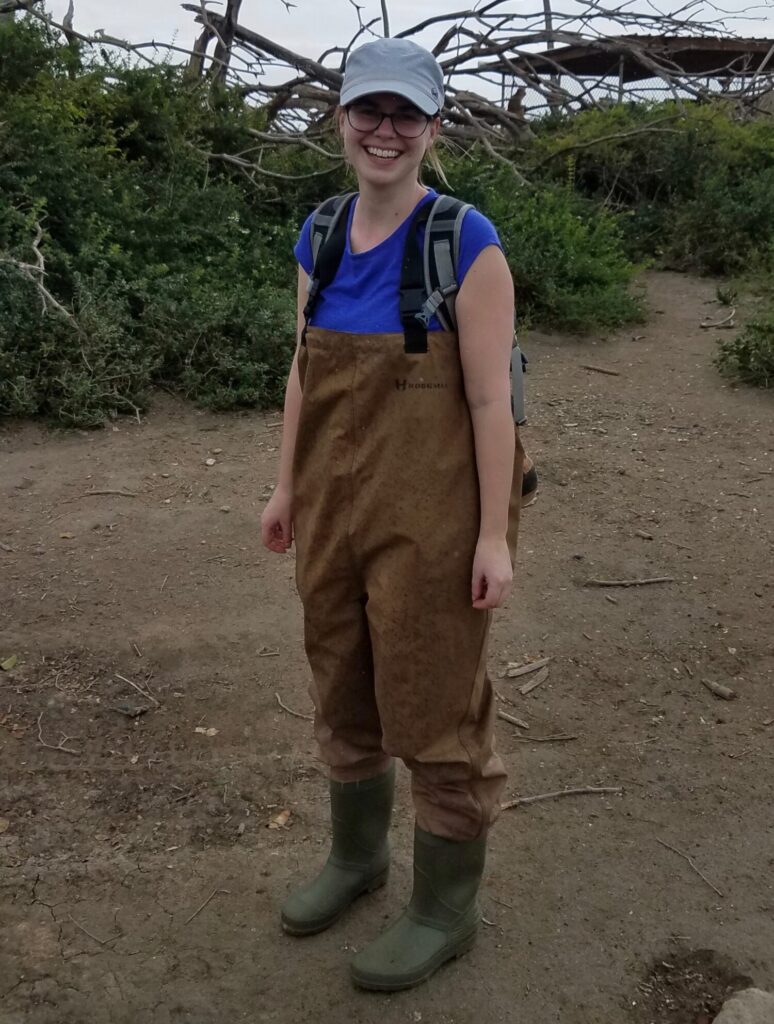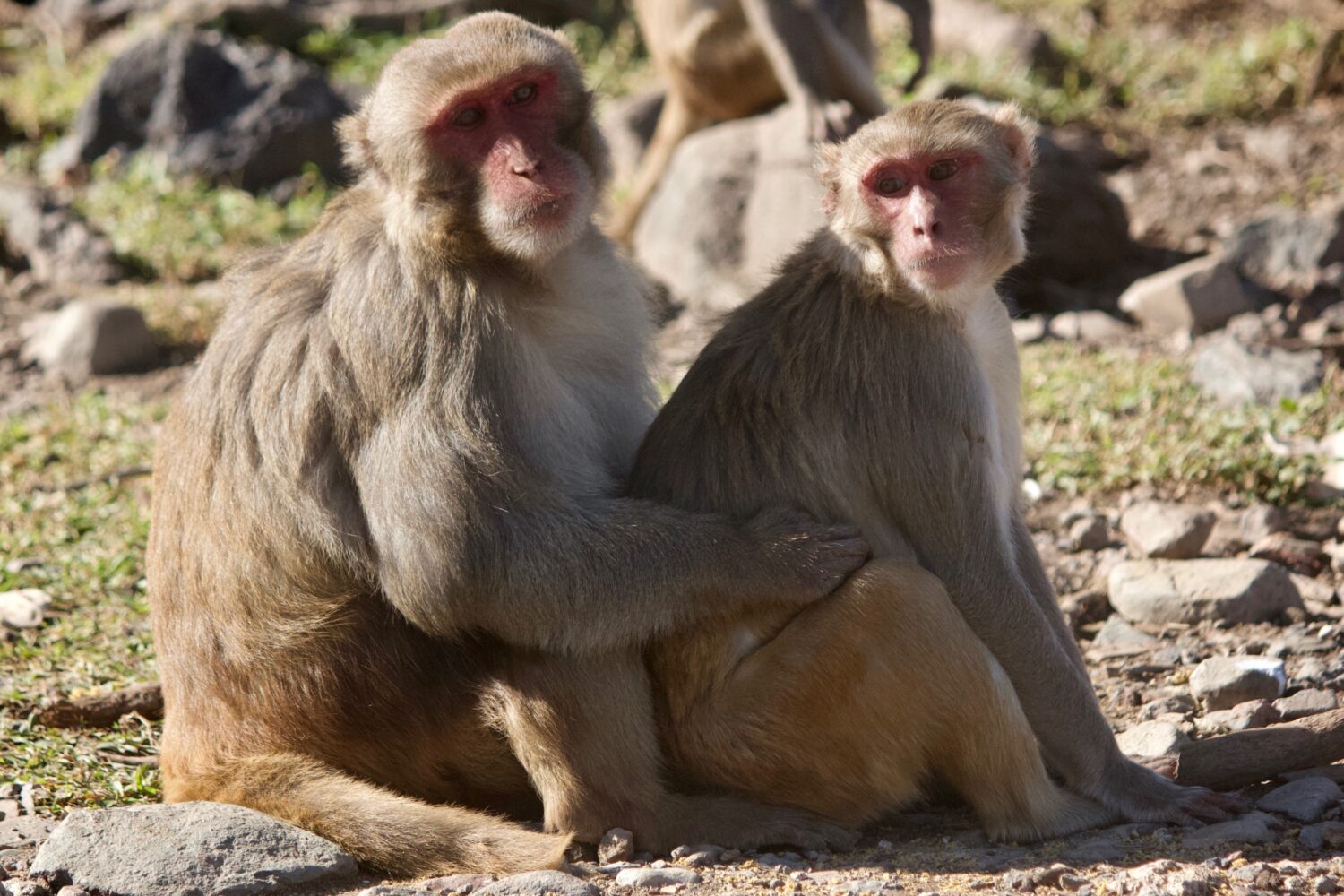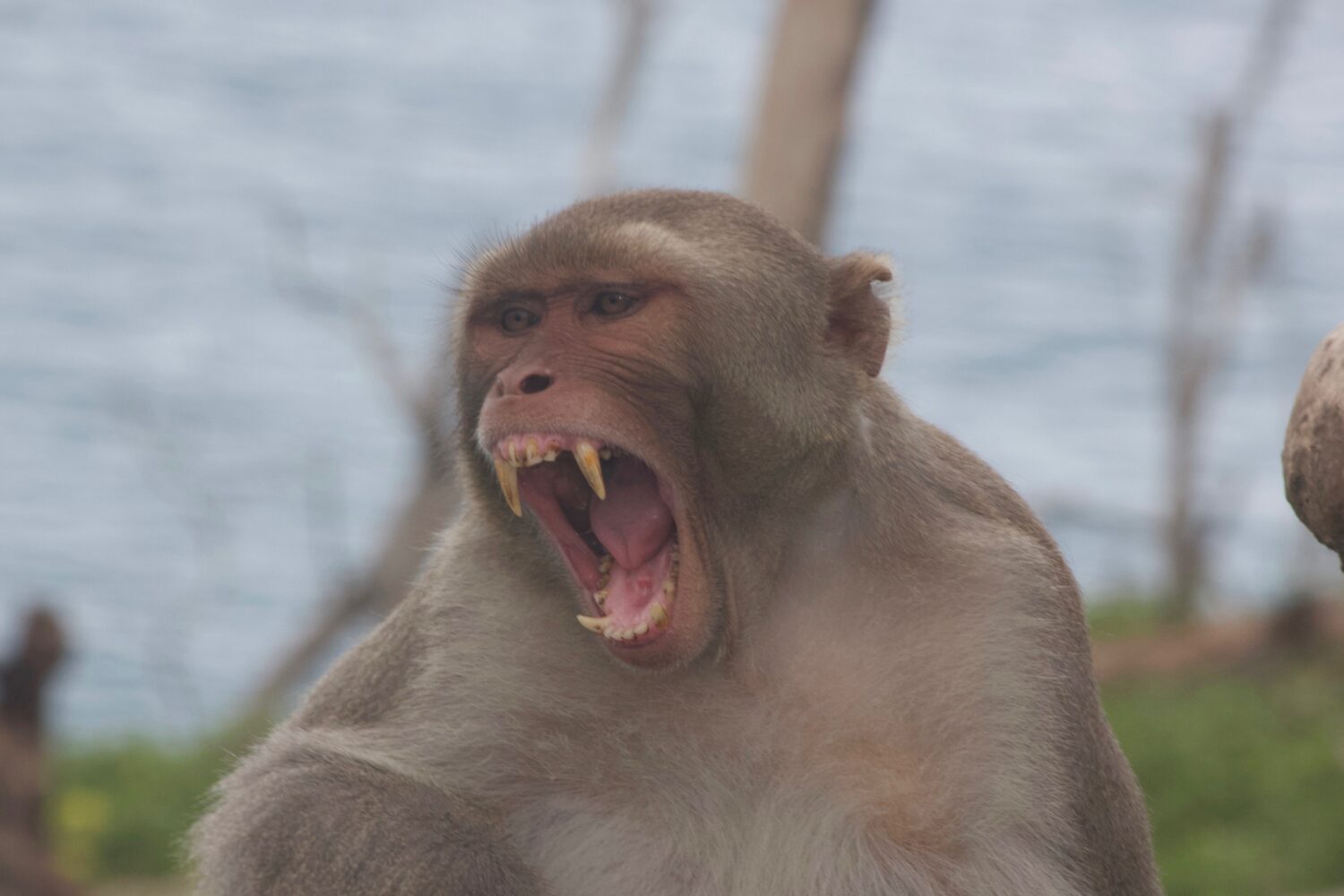Grantee Spotlight
Clare Kimock is a PhD candidate at New York University. She was awarded a Leakey Foundation Research Grant in 2019 for her project entitled “Rhesus macaque canine dimorphism in evolutionary context.”

Many primates are sexually dimorphic, with males usually being larger in body size than females, and often also having large canine teeth. One characteristic that sets modern humans apart from our closest living relatives, chimpanzees and bonobos, is reduced canine tooth size sexual dimorphism – human biological males and females have similarly-sized canine teeth. One of the goals of paleoanthropological research is to understand when and why this reduction in canine sexual dimorphism occurred along the human lineage. Paleoanthropologists address this question by analyzing the fossilized teeth of extinct hominins (species more closely related to modern humans than to chimpanzees) and by using modern primate species as models to better understand the factors influencing whether selection acts to produce sexual dimorphism.

Most research suggests that large male body and canine size has evolved because larger males are more successful at competing for mates, and therefore leave more offspring. The reduction in canine size dimorphism in modern humans may then indicate that male-male fighting competition became less important during the course of human evolution. However, few studies have been able to directly test how canine size relates to mating and reproductive success in primates. My research uses a model primate species, the rhesus macaque (Macaca mulatta), to better understand why sexually dimorphic canine teeth have evolved in some primate species, and to improve our understanding of why this trait was lost in modern humans. I am investigating how canine tooth size is inherited, whether males with larger canine teeth sire more offspring, and if canines are used as a signal and/or a physical weapon in fights between males.

I am studying the free-ranging rhesus macaque population on the island of Cayo Santiago, Puerto Rico, one of the longest-running primate field sites in the world. The macaques are not native – all of the ~1,600 animals currently living on the island are descended from 409 animals brought to the island from India in 1938 for research purposes. The Cayo Santiago macaques have been studied in-depth for decades. Research conducted to date suggests that, although rhesus macaques are sexually dimorphic, males invest less in physical fights than in many other Papionin species, and that females exhibit a good deal of direct mate choice, a situation that may parallel that of our hominin ancestors and relatives. I hope that by learning more about how canine tooth size relates to competition and reproductive success among rhesus macaque males, we will be able to better understand the evolution of a key trait of modern humans.


